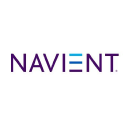NNI

Nelnet, Inc.
NNI
(2.5)107,03 USD
1.09% ROA
3.42% ROE
26.19x PER
4.036.077.338,00 USD
319.93% DER
1.01% Yield
6.18% NPM
Nelnet, Inc. Stock Analysis
Nelnet, Inc. Fundamental Analysis
Fundamental analysis in stock investing is like studying the foundation of a house before buying it. It involves looking at a company's financial health, like its earnings, assets, and debts, to determine if it's a good investment based on its fundamental strength and potential for growth.
| # | Analysis | Rating |
|---|---|---|
| 1 |
PBV
The stock's low PBV ratio (0.99x) suggests it's undervalued, making it an attractive opportunity for investors. |
|
| 2 |
Dividend Growth
The company's dividend growth has consistently increased every year in the last five years, indicating a strong track record of positive returns for investors. |
|
| 3 |
Dividend
The company's consistent dividend distribution over the past five years reflects its dedication to providing shareholders with steady returns, making it an appealing choice for investors seeking income stability. |
|
| 4 |
ROE
The stock's ROE falls within an average range (5.92%), demonstrating satisfactory profitability and efficiency in utilizing shareholders' equity. |
|
| 5 |
ROA
The stock's ROA (1.08%) shows that it's doing a pretty good job at making money from its assets, making it a solid choice to invest and earn steady profits. |
|
| 6 |
Graham Number
Based on the Graham number, this company's stock price appears to be lower than its intrinsic value, signaling a potentially favorable investment choice. |
|
| 7 |
Buffet Intrinsic Value
The company's stock seems undervalued (640) by Warren Buffett's formula, indicating a promising investment opportunity as its intrinsic value exceeds the market price. |
|
| 8 |
DER
The stock is burdened with a heavy load of debt (388%), making it financially unstable and potentially risky for investors. |
|
| 9 |
Revenue Growth
Regrettably, this company's revenue has shown no signs of growth over the past three years, suggesting limited potential for returns and making it a less appealing choice. |
|
| 10 |
Net Profit Growth
The net profit of this company has shown no signs of growth over the last five years, suggesting limited profitability and making it a less attractive investment opportunity. |
|
| 11 |
Assets Growth
Regrettably, this company's revenue has shown no signs of growth over the past three years, suggesting limited potential for returns and making it a less appealing choice. |
Nelnet, Inc. Technical Analysis
Technical analysis in stock investing is like reading the patterns on a weather map to predict future weather conditions. It involves studying past stock price movements and trading volumes to make predictions about where a stock's price might go next, without necessarily looking at the company's financial health.
| # | Analysis | Recommendation |
|---|---|---|
| 1 | Awesome Oscillator | Buy |
| 2 | MACD | Sell |
| 3 | RSI | Hold |
| 4 | Stoch RSI | Sell |
Nelnet, Inc. Price Chart
Financial Statements
Financial statements are like report cards for companies. They show how much money a company makes (income statement), what it owns and owes (balance sheet), and where it spends its money (cash flow statement), helping stock investors understand if a company is healthy and worth investing in.
Income Statements
An income statement for a company is like a scoreboard for its profits and losses. It shows how much money the company made (revenue) and how much it spent to make that money (expenses), helping stock investors see if a company is making a profit or not.
Revenue in stock investing is the total amount of money a company earns from its sales, and it's a key factor that investors consider to assess a company's financial performance and growth potential.
| Year | Revenue | Growth |
|---|---|---|
| 2000 | 64.853.000 | |
| 2001 | 115.120.000 | 43.66% |
| 2002 | 316.129.000 | 63.58% |
| 2003 | 296.134.000 | -6.75% |
| 2004 | 522.695.000 | 43.34% |
| 2005 | 613.278.000 | 14.77% |
| 2006 | 572.000.000 | -7.22% |
| 2007 | 566.716.000 | -0.93% |
| 2008 | 510.354.000 | -11.04% |
| 2009 | 537.555.000 | 5.06% |
| 2010 | 706.872.000 | 23.95% |
| 2011 | 664.147.000 | -6.43% |
| 2012 | 651.194.000 | -1.99% |
| 2013 | 848.056.000 | 23.21% |
| 2014 | 878.222.000 | 3.43% |
| 2015 | 824.263.000 | -6.55% |
| 2016 | 803.336.000 | -2.61% |
| 2017 | 691.607.000 | -16.15% |
| 2018 | 998.341.000 | 30.72% |
| 2019 | 978.569.000 | -2.02% |
| 2020 | 1.061.086.000 | 7.78% |
| 2021 | 1.232.381.000 | 13.9% |
| 2022 | 1.405.863.000 | 12.34% |
| 2023 | 1.132.048.000 | -24.19% |
| 2023 | 1.176.566.000 | 3.78% |
| 2024 | 2.024.484.000 | 41.88% |
Research and Development Expenses are the costs a company incurs to create and improve its products or services, which can be important for investors to evaluate a company's innovation and potential for future growth.
| Year | Research and Development Expenses | Growth |
|---|---|---|
| 2000 | 0 | |
| 2001 | 0 | 0% |
| 2002 | 0 | 0% |
| 2003 | 0 | 0% |
| 2004 | 0 | 0% |
| 2005 | 0 | 0% |
| 2006 | 0 | 0% |
| 2007 | 0 | 0% |
| 2008 | 0 | 0% |
| 2009 | 0 | 0% |
| 2010 | 0 | 0% |
| 2011 | 0 | 0% |
| 2012 | 0 | 0% |
| 2013 | 0 | 0% |
| 2014 | 0 | 0% |
| 2015 | 0 | 0% |
| 2016 | 0 | 0% |
| 2017 | 0 | 0% |
| 2018 | 3.900.000 | 100% |
| 2019 | 0 | 0% |
| 2020 | 0 | 0% |
| 2021 | 0 | 0% |
| 2022 | 3.700.000 | 100% |
| 2023 | 0 | 0% |
| 2023 | 0 | 0% |
| 2024 | 0 | 0% |
General and Administrative Expenses are the costs a company incurs to run its day-to-day operations, such as office rent, salaries, and utilities, which investors consider to understand a company's overall efficiency and management effectiveness.
| Year | General and Administrative Expenses | Growth |
|---|---|---|
| 2000 | 0 | |
| 2001 | 77.370.000 | 100% |
| 2002 | 106.874.000 | 27.61% |
| 2003 | 124.273.000 | 14% |
| 2004 | 133.667.000 | 7.03% |
| 2005 | 172.732.000 | 22.62% |
| 2006 | 246.116.000 | 29.82% |
| 2007 | 242.946.000 | -1.3% |
| 2008 | 183.393.000 | -32.47% |
| 2009 | 163.514.000 | -12.16% |
| 2010 | 167.080.000 | 2.13% |
| 2011 | 177.951.000 | 6.11% |
| 2012 | 192.826.000 | 7.71% |
| 2013 | 196.169.000 | 1.7% |
| 2014 | 228.079.000 | 13.99% |
| 2015 | 247.914.000 | 8% |
| 2016 | 255.924.000 | 3.13% |
| 2017 | 301.885.000 | 15.22% |
| 2018 | 436.179.000 | 30.79% |
| 2019 | 463.503.000 | 5.9% |
| 2020 | 501.832.000 | 7.64% |
| 2021 | 507.132.000 | 1.05% |
| 2022 | 589.579.000 | 13.98% |
| 2023 | 564.816.000 | -4.38% |
| 2023 | 591.537.000 | 4.52% |
| 2024 | 558.536.000 | -5.91% |
EBITDA stands for Earnings Before Interest, Taxes, Depreciation, and Amortization. It is a measure that helps stock investors analyze a company's profitability by looking at its earnings without considering certain expenses. This helps to get a clearer picture of the company's financial performance and its ability to generate cash flow.
| Year | EBITDA | Growth |
|---|---|---|
| 2000 | 4.520.000 | |
| 2001 | 7.147.000 | 36.76% |
| 2002 | 0 | 0% |
| 2003 | 0 | 0% |
| 2004 | 295.914.000 | 100% |
| 2005 | 0 | 0% |
| 2006 | 0 | 0% |
| 2007 | 0 | 0% |
| 2008 | 0 | 0% |
| 2009 | 0 | 0% |
| 2010 | 421.884.000 | 100% |
| 2011 | 425.259.000 | 0.79% |
| 2012 | 0 | 0% |
| 2013 | 519.130.000 | 100% |
| 2014 | 0 | 0% |
| 2015 | 403.186.000 | 100% |
| 2016 | 417.898.000 | 3.52% |
| 2017 | 0 | 0% |
| 2018 | 0 | 0% |
| 2019 | 281.794.000 | 100% |
| 2020 | 923.979.000 | 69.5% |
| 2021 | 775.120.000 | -19.2% |
| 2022 | 1.011.876.000 | 23.4% |
| 2023 | 1.140.240.000 | 11.26% |
| 2023 | 1.022.714.000 | -11.49% |
| 2024 | 1.039.736.000 | 1.64% |
Gross profit is the money a company makes from selling its products or services after subtracting the cost of producing or providing them, and it is an important measure for investors to understand a company's profitability.
| Year | Gross Profit | Growth |
|---|---|---|
| 2000 | 64.853.000 | |
| 2001 | 115.120.000 | 43.66% |
| 2002 | 316.129.000 | 63.58% |
| 2003 | 296.134.000 | -6.75% |
| 2004 | 522.695.000 | 43.34% |
| 2005 | 473.186.000 | -10.46% |
| 2006 | 348.354.000 | -35.83% |
| 2007 | 374.512.000 | 6.98% |
| 2008 | 502.038.000 | 25.4% |
| 2009 | 412.517.000 | -21.7% |
| 2010 | 350.057.000 | -17.84% |
| 2011 | 486.196.000 | 28% |
| 2012 | 458.368.000 | -6.07% |
| 2013 | 651.887.000 | 29.69% |
| 2014 | 650.143.000 | -0.27% |
| 2015 | 576.349.000 | -12.8% |
| 2016 | 547.412.000 | -5.29% |
| 2017 | 389.722.000 | -40.46% |
| 2018 | 562.162.000 | 30.67% |
| 2019 | 515.066.000 | -9.14% |
| 2020 | 559.254.000 | 7.9% |
| 2021 | 725.249.000 | 22.89% |
| 2022 | 816.284.000 | 11.15% |
| 2023 | 567.232.000 | -43.91% |
| 2023 | 585.029.000 | 3.04% |
| 2024 | 1.770.740.000 | 66.96% |
Net income in stock investing is like the money a company actually gets to keep as profit after paying all its bills, and it's an important measure to understand how well a company is doing financially.
| Year | Net Profit | Growth |
|---|---|---|
| 2000 | 4.520.000 | |
| 2001 | 7.147.000 | 36.76% |
| 2002 | 48.538.000 | 85.28% |
| 2003 | 27.103.000 | -79.09% |
| 2004 | 149.179.000 | 81.83% |
| 2005 | 181.122.000 | 17.64% |
| 2006 | 68.155.000 | -165.75% |
| 2007 | 35.429.000 | -92.37% |
| 2008 | 28.662.000 | -23.61% |
| 2009 | 139.125.000 | 79.4% |
| 2010 | 189.034.000 | 26.4% |
| 2011 | 204.335.000 | 7.49% |
| 2012 | 177.997.000 | -14.8% |
| 2013 | 302.672.000 | 41.19% |
| 2014 | 307.610.000 | 1.61% |
| 2015 | 267.979.000 | -14.79% |
| 2016 | 256.751.000 | -4.37% |
| 2017 | 173.166.000 | -48.27% |
| 2018 | 227.913.000 | 24.02% |
| 2019 | 141.803.000 | -60.73% |
| 2020 | 352.443.000 | 59.77% |
| 2021 | 393.286.000 | 10.39% |
| 2022 | 407.347.000 | 3.45% |
| 2023 | 181.328.000 | -124.65% |
| 2023 | 91.532.000 | -98.1% |
| 2024 | 180.364.000 | 49.25% |
EPS, or earnings per share, is a measure that shows how much profit a company has earned for each outstanding share of its stock, and it is important for stock investors as it helps understand the profitability of a company and compare it with other companies in the market.
| Year | Earning per Share (EPS) | Growth |
|---|---|---|
| 2000 | 0 | |
| 2001 | 0 | 0% |
| 2002 | 1 | 100% |
| 2003 | 1 | 0% |
| 2004 | 3 | 100% |
| 2005 | 3 | 33.33% |
| 2006 | 1 | -200% |
| 2007 | 1 | 0% |
| 2008 | 1 | 0% |
| 2009 | 3 | 100% |
| 2010 | 4 | 33.33% |
| 2011 | 4 | 25% |
| 2012 | 4 | -33.33% |
| 2013 | 7 | 50% |
| 2014 | 7 | 0% |
| 2015 | 6 | -20% |
| 2016 | 6 | 16.67% |
| 2017 | 4 | -50% |
| 2018 | 6 | 20% |
| 2019 | 4 | -66.67% |
| 2020 | 9 | 66.67% |
| 2021 | 10 | 10% |
| 2022 | 11 | 0% |
| 2023 | 5 | -150% |
| 2023 | 2 | -100% |
| 2024 | 5 | 50% |
Cashflow Statements
Cashflow statements show the movement of money in and out of a company, helping stock investors understand how much money a company makes and spends. By examining cashflow statements, investors can assess if a company is generating enough cash to pay its bills, invest in growth, and provide returns to stockholders.
Free cash flow is the leftover cash that a company generates after covering its operating expenses and capital expenditures, which is important for stock investors as it shows how much money a company has available to invest in growth, pay dividends, or reduce debt.
| Year | Free Cashflow | Growth |
|---|---|---|
| 2002 | 120.802.000 | |
| 2003 | 136.638.000 | 11.59% |
| 2004 | 224.626.000 | 39.17% |
| 2005 | 139.913.000 | -60.55% |
| 2006 | 163.297.000 | 14.32% |
| 2007 | 252.999.000 | 35.46% |
| 2008 | 315.962.000 | 19.93% |
| 2009 | 323.502.000 | 2.33% |
| 2010 | 182.098.000 | -77.65% |
| 2011 | 296.695.000 | 38.62% |
| 2012 | 289.374.000 | -2.53% |
| 2013 | 370.170.000 | 21.83% |
| 2014 | 330.961.000 | -11.85% |
| 2015 | 374.604.000 | 11.65% |
| 2016 | 257.655.000 | -45.39% |
| 2017 | 71.503.000 | -260.34% |
| 2018 | 145.869.000 | 50.98% |
| 2019 | 206.416.000 | 29.33% |
| 2020 | 99.503.000 | -107.45% |
| 2021 | 485.915.000 | 79.52% |
| 2022 | 624.638.000 | 22.21% |
| 2023 | 358.848.000 | -74.07% |
| 2023 | 138.884.000 | -158.38% |
| 2024 | 122.787.000 | -13.11% |
Operating cash flow represents the cash generated or consumed by a company's day-to-day operations, excluding external investing or financing activities, and is crucial for stock investors as it shows how much cash a company is generating from its core business operations.
| Year | Operating Cashflow | Growth |
|---|---|---|
| 2002 | 134.210.000 | |
| 2003 | 152.999.000 | 12.28% |
| 2004 | 241.082.000 | 36.54% |
| 2005 | 159.108.000 | -51.52% |
| 2006 | 215.242.000 | 26.08% |
| 2007 | 273.060.000 | 21.17% |
| 2008 | 321.103.000 | 14.96% |
| 2009 | 324.706.000 | 1.11% |
| 2010 | 194.868.000 | -66.63% |
| 2011 | 310.862.000 | 37.31% |
| 2012 | 299.318.000 | -3.86% |
| 2013 | 387.180.000 | 22.69% |
| 2014 | 357.449.000 | -8.32% |
| 2015 | 391.365.000 | 8.67% |
| 2016 | 325.257.000 | -20.32% |
| 2017 | 227.508.000 | -42.97% |
| 2018 | 270.892.000 | 16.02% |
| 2019 | 298.915.000 | 9.37% |
| 2020 | 212.815.000 | -40.46% |
| 2021 | 544.867.000 | 60.94% |
| 2022 | 684.059.000 | 20.35% |
| 2023 | 432.900.000 | -58.02% |
| 2023 | 154.235.000 | -180.68% |
| 2024 | 133.404.000 | -15.61% |
Capex, short for capital expenditures, refers to the money a company spends on acquiring or upgrading tangible assets like buildings, equipment, or technology, which is important for stock investors as it indicates how much a company is investing in its infrastructure to support future growth and profitability.
| Year | Capital Expenditure | Growth |
|---|---|---|
| 2002 | 13.408.000 | |
| 2003 | 16.361.000 | 18.05% |
| 2004 | 16.456.000 | 0.58% |
| 2005 | 19.195.000 | 14.27% |
| 2006 | 51.945.000 | 63.05% |
| 2007 | 20.061.000 | -158.94% |
| 2008 | 5.141.000 | -290.22% |
| 2009 | 1.204.000 | -326.99% |
| 2010 | 12.770.000 | 90.57% |
| 2011 | 14.167.000 | 9.86% |
| 2012 | 9.944.000 | -42.47% |
| 2013 | 17.010.000 | 41.54% |
| 2014 | 26.488.000 | 35.78% |
| 2015 | 16.761.000 | -58.03% |
| 2016 | 67.602.000 | 75.21% |
| 2017 | 156.005.000 | 56.67% |
| 2018 | 125.023.000 | -24.78% |
| 2019 | 92.499.000 | -35.16% |
| 2020 | 113.312.000 | 18.37% |
| 2021 | 58.952.000 | -92.21% |
| 2022 | 59.421.000 | 0.79% |
| 2023 | 74.052.000 | 19.76% |
| 2023 | 15.351.000 | -382.39% |
| 2024 | 10.617.000 | -44.59% |
Balance Sheet
Balance sheets provide a snapshot of a company's financial health and its assets (such as cash, inventory, and property) and liabilities (like debts and obligations) at a specific point in time. For stock investors, balance sheets help assess the company's overall worth and evaluate its ability to meet financial obligations and support future growth.
Equity refers to the ownership interest or stake that shareholders have in a company, representing their claim on its assets and earnings after all debts and liabilities are paid.
| Year | Equity | Growth |
|---|---|---|
| 2000 | 54.161.000 | |
| 2001 | 63.186.000 | 14.28% |
| 2002 | 108.746.000 | 41.9% |
| 2003 | 305.489.000 | 64.4% |
| 2004 | 456.175.000 | 33.03% |
| 2005 | 650.118.000 | 29.83% |
| 2006 | 671.850.000 | 3.23% |
| 2007 | 608.879.000 | -10.34% |
| 2008 | 643.226.000 | 5.34% |
| 2009 | 784.563.000 | 18.01% |
| 2010 | 906.633.000 | 13.46% |
| 2011 | 1.066.205.000 | 14.97% |
| 2012 | 1.165.213.000 | 8.5% |
| 2013 | 1.443.990.000 | 19.31% |
| 2014 | 1.725.678.000 | 16.32% |
| 2015 | 1.892.158.000 | 8.8% |
| 2016 | 2.070.925.000 | 8.63% |
| 2017 | 2.165.387.000 | 4.36% |
| 2018 | 2.314.779.000 | 6.45% |
| 2019 | 2.391.094.000 | 3.19% |
| 2020 | 2.628.349.000 | 9.03% |
| 2021 | 2.952.838.000 | 10.99% |
| 2022 | 3.199.902.000 | 7.72% |
| 2023 | 3.221.915.000 | 0.68% |
| 2023 | 3.259.155.000 | 1.14% |
| 2024 | 3.220.022.000 | -1.22% |
Assets represent the valuable resources that a company owns, such as cash, inventory, property, and equipment, and understanding a company's assets helps investors assess its value and potential for generating future profits.
| Year | Assets | Growth |
|---|---|---|
| 2000 | 4.021.948.000 | |
| 2001 | 8.134.560.000 | 50.56% |
| 2002 | 9.766.583.000 | 16.71% |
| 2003 | 11.931.509.000 | 18.14% |
| 2004 | 15.160.005.000 | 21.3% |
| 2005 | 22.798.622.000 | 33.5% |
| 2006 | 26.796.873.000 | 14.92% |
| 2007 | 29.162.783.000 | 8.11% |
| 2008 | 27.854.897.000 | -4.7% |
| 2009 | 25.876.427.000 | -7.65% |
| 2010 | 25.893.892.000 | 0.07% |
| 2011 | 25.852.217.000 | -0.16% |
| 2012 | 26.607.895.000 | 2.84% |
| 2013 | 27.770.849.000 | 4.19% |
| 2014 | 30.098.143.000 | 7.73% |
| 2015 | 30.485.905.000 | 1.27% |
| 2016 | 27.180.108.000 | -12.16% |
| 2017 | 23.964.435.000 | -13.42% |
| 2018 | 25.220.968.000 | 4.98% |
| 2019 | 23.708.970.000 | -6.38% |
| 2020 | 22.646.160.000 | -4.69% |
| 2021 | 21.678.041.000 | -4.47% |
| 2022 | 19.374.044.000 | -11.89% |
| 2023 | 16.736.645.000 | -15.76% |
| 2023 | 17.222.682.000 | 2.82% |
| 2024 | 14.501.193.000 | -18.77% |
Liabilities refer to the financial obligations or debts that a company owes to creditors or external parties, and understanding a company's liabilities is important for investors as it helps assess the company's financial risk and ability to meet its obligations.
| Year | Liabilities | Growth |
|---|---|---|
| 2000 | 3.967.787.000 | |
| 2001 | 8.071.374.000 | 50.84% |
| 2002 | 9.657.837.000 | 16.43% |
| 2003 | 11.626.020.000 | 16.93% |
| 2004 | 14.703.830.000 | 20.93% |
| 2005 | 22.148.504.000 | 33.61% |
| 2006 | 26.125.023.000 | 15.22% |
| 2007 | 28.553.904.000 | 8.51% |
| 2008 | 27.211.671.000 | -4.93% |
| 2009 | 25.091.864.000 | -8.45% |
| 2010 | 24.987.259.000 | -0.42% |
| 2011 | 24.786.012.000 | -0.81% |
| 2012 | 25.442.682.000 | 2.58% |
| 2013 | 26.326.859.000 | 3.36% |
| 2014 | 28.372.465.000 | 7.21% |
| 2015 | 28.593.747.000 | 0.77% |
| 2016 | 25.109.183.000 | -13.88% |
| 2017 | 21.799.048.000 | -15.18% |
| 2018 | 22.906.189.000 | 4.83% |
| 2019 | 21.317.876.000 | -7.45% |
| 2020 | 20.017.811.000 | -6.49% |
| 2021 | 18.725.203.000 | -6.9% |
| 2022 | 16.174.142.000 | -15.77% |
| 2023 | 13.514.730.000 | -19.68% |
| 2023 | 13.963.527.000 | 3.21% |
| 2024 | 11.281.171.000 | -23.78% |
Nelnet, Inc. Financial Ratio (TTM)
Valuation Metrics
- Revenue per Share
- 50.93
- Net Income per Share
- 4.25
- Price to Earning Ratio
- 26.19x
- Price To Sales Ratio
- 2.17x
- POCF Ratio
- 7.02
- PFCF Ratio
- 7.94
- Price to Book Ratio
- 1.23
- EV to Sales
- 6.81
- EV Over EBITDA
- 11.68
- EV to Operating CashFlow
- 21.86
- EV to FreeCashFlow
- 24.89
- Earnings Yield
- 0.04
- FreeCashFlow Yield
- 0.13
- Market Cap
- 4,04 Bil.
- Enterprise Value
- 12,66 Bil.
- Graham Number
- 92.87
- Graham NetNet
- -242.1
Income Statement Metrics
- Net Income per Share
- 4.25
- Income Quality
- 3.87
- ROE
- 0.05
- Return On Assets
- 0.01
- Return On Capital Employed
- 0.05
- Net Income per EBT
- 1.01
- EBT Per Ebit
- 0.18
- Ebit per Revenue
- 0.34
- Effective Tax Rate
- 0.25
Margins
- Sales, General, & Administrative to Revenue
- 0.31
- Research & Developement to Revenue
- 0
- Stock Based Compensation to Revenue
- 0.01
- Gross Profit Margin
- 0.79
- Operating Profit Margin
- 0.34
- Pretax Profit Margin
- 0.06
- Net Profit Margin
- 0.06
Dividends
- Dividend Yield
- 0.01
- Dividend Yield %
- 1.01
- Payout Ratio
- 0.26
- Dividend Per Share
- 1.12
Operating Metrics
- Operating Cashflow per Share
- 15.86
- Free CashFlow per Share
- 13.92
- Capex to Operating CashFlow
- 0.12
- Capex to Revenue
- 0.04
- Capex to Depreciation
- 0.79
- Return on Invested Capital
- 0.04
- Return on Tangible Assets
- 0.01
- Days Sales Outstanding
- 158.5
- Days Payables Outstanding
- 26.85
- Days of Inventory on Hand
- 0
- Receivables Turnover
- 2.3
- Payables Turnover
- 13.6
- Inventory Turnover
- 0
- Capex per Share
- 1.93
Balance Sheet
- Cash per Share
- 50,17
- Book Value per Share
- 88,16
- Tangible Book Value per Share
- 82.72
- Shareholders Equity per Share
- 90.19
- Interest Debt per Share
- 309.98
- Debt to Equity
- 3.2
- Debt to Assets
- 0.73
- Net Debt to EBITDA
- 7.96
- Current Ratio
- 21.29
- Tangible Asset Value
- 3,02 Bil.
- Net Current Asset Value
- 9,97 Bil.
- Invested Capital
- 20581381000
- Working Capital
- 20,25 Bil.
- Intangibles to Total Assets
- 0.01
- Average Receivables
- 0,84 Bil.
- Average Payables
- 0,03 Bil.
- Average Inventory
- 0
- Debt to Market Cap
- 2.61
Dividends
Dividends in stock investing are like rewards that companies give to their shareholders. They are a portion of the company's profits distributed to investors, typically in the form of cash payments, as a way for them to share in the company's success.
| Year | Dividends | Growth |
|---|---|---|
| 2007 | 0 | |
| 2008 | 0 | 0% |
| 2009 | 0 | 0% |
| 2010 | 1 | 0% |
| 2011 | 0 | 0% |
| 2012 | 1 | 100% |
| 2013 | 0 | 0% |
| 2014 | 0 | 0% |
| 2015 | 0 | 0% |
| 2016 | 1 | 0% |
| 2017 | 1 | 0% |
| 2018 | 1 | 0% |
| 2019 | 1 | 0% |
| 2020 | 1 | 0% |
| 2021 | 1 | 0% |
| 2022 | 1 | 0% |
| 2023 | 1 | 100% |
| 2024 | 1 | 0% |
Nelnet, Inc. Profile
About Nelnet, Inc.
Nelnet, Inc. engages in loan servicing, communications, education technology, services, and payment processing businesses worldwide. The Loan Servicing and Systems segment provides loan conversion, application processing, borrower updates, customer service, payment processing, due diligence procedures, funds management reconciliation, and claim processing services. This segment also provides student loan servicing software; business process outsourcing services specialized in contact center management, such as inbound calls, outreach campaigns and sales, and interacting with customers through multi-channels. The Education Technology, Services, and Payment Processing segment offers financial management services; school information system software; website design and cost effective admissions software; FACTS Giving, a donation platform; and customized professional development and coaching services, educational instruction services, and technology products that aid in teacher and student evaluations. It also offers tuition payment plans, and service and technology for student billings, payments, and refunds; solutions for in-person, online, and mobile payment experiences on campus; payment processing services, such as credit card and electronic transfer; faith community engagement, giving management, and learning management services and technologies; and an integrated commerce payment platform, financial management, and tuition payment plan services, as well as a school management platform that provides administrative, information management, financial management, and communication functions for K-12 schools. The Communications segment provides fiber optic service to homes and businesses for internet, television, and telephone services. The Asset Generation and Management segment acquires, manages, and owns loan assets. The Nelnet Bank segment operates internet industrial banks. The company was founded in 1978 and is headquartered in Lincoln, Nebraska.
- CEO
- Mr. Jeffrey R. Noordhoek
- Employee
- 7.550
- Address
-
121 South 13th Street
Lincoln, 68508
Nelnet, Inc. Executives & BODs
| # | Name | Age |
|---|---|---|
| 1 |
Mr. Timothy Alan Tewes President |
70 |
| 2 |
Mr. Michael Sullivan Dunlap J.D. Executive Chairman of the Board |
70 |
| 3 |
Mr. Jeffrey R. Noordhoek Chief Executive Officer |
70 |
| 4 |
Mr. Terry J. Heimes Chief Operating Officer |
70 |
| 5 |
Ms. Jackie Strohbehn President of Nelnet Campus Commerce |
70 |
| 6 |
Mr. Matthew W. Dunlap Chief Business Development Officer, President of Nelnet Financial Services & Director |
70 |
| 7 |
Ms. Deeann Wenger President of Nelnet Business Services |
70 |
| 8 |
Mr. William J. Munn J.D. Corporate Secretary, Chief Governance Officer & General Counsel |
70 |
| 9 |
Ms. Emily Olinger Chief People Services Officer |
70 |
| 10 |
Mr. Phil Morgan Investor Relations Contact |
70 |














